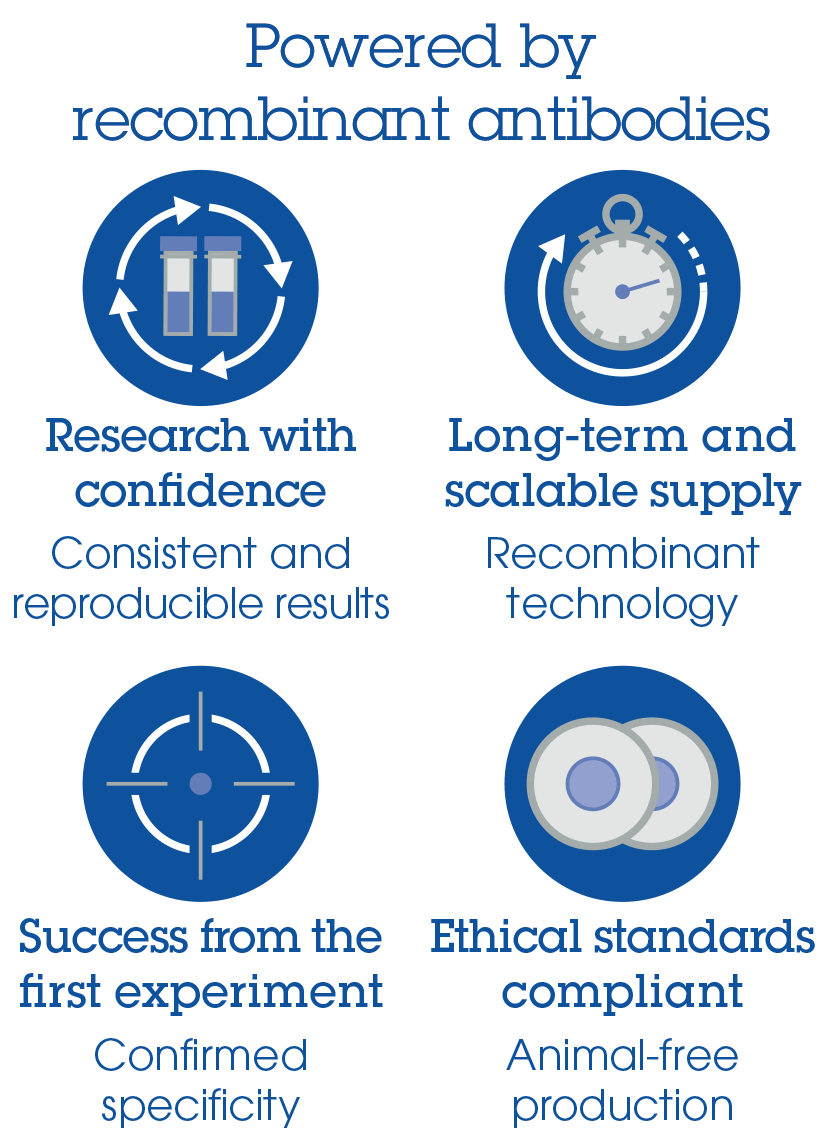Mouse IL-1beta Antibody Pair - BSA and Azide free (ab241673)
Key features and details
- Unconjugated capture and detector antibodies
- Adaptable to any antibody pair-based assay format
- Antibody concentration ~ 1 mg/ml
- BSA and azide free buffer - ready for conjugation
- Reacts with: Mouse
Overview
-
Product name
Mouse IL-1beta Antibody Pair - BSA and Azide free
See all IL-1 beta kits -
Assay type
ELISA set -
Range
7.8 pg/ml - 500 pg/ml -
Species reactivity
Reacts with: Mouse -
Product overview
The Antibody Pair can be used to quantify Mouse IL-1 beta (Interleukin-1 beta). BSA and Azide free antibody pairs include unconjugated capture and detector antibodies suitable for sandwich ELISAs. The antibodies are provided at an approximate concentration of 1 mg/ml as measured by the protein A280 method. The recommended antibody orientation is based on internal optimization for ELISA-based assays. Antibody orientation is assay dependent and needs to be optimized for each assay type. Both capture and detector antibodies are rabbit monoclonal antibodies delivering consistent, specific, and sensitive results.
For additional information on the performance of the antibody pair, see the equivalent SimpleStep ELISA® Kit (ab197742), which uses the same antibodies. However, due to differences in their formulation, this antibody pair cannot be used with the consumables provided with our SimpleStep ELISA Kits. Please note that the range provided for the pairs is only an estimation based on the performance of the related product using the same antibody pair. Performance of the antibody pair will depend on the specific characteristics of your assay. We guarantee the product works in sandwich ELISA, but we do not guarantee the sensitivity or dynamic range of the antibody pair in your assay.
Download SDS here.
-
Tested applications
Suitable for: Sandwich ELISAmore details -
Platform
Reagents
Properties
-
Storage instructions
Store at +4°C. Please refer to protocols. -
Carrier free
Yes -
Components 10 x 96 tests Mouse IL-1beta Capture Antibody (unconjugated) 1 x 100µg Mouse IL-1beta Detector Antibody (unconjugated) 1 x 100µg -
Research areas
-
Function
Potent proinflammatory cytokine. Initially discovered as the major endogenous pyrogen, induces prostaglandin synthesis, neutrophil influx and activation, T-cell activation and cytokine production, B-cell activation and antibody production, and fibroblast proliferation and collagen production. Promotes Th17 differentiation of T-cells. -
Tissue specificity
Expressed in activated monocytes/macrophages (at protein level). -
Sequence similarities
Belongs to the IL-1 family. -
Post-translational
modificationsActivation of the IL1B precursor involves a CASP1-catalyzed proteolytic cleavage. Processing and secretion are temporarily associated. -
Cellular localization
Cytoplasm, cytosol. Lysosome. Secreted, exosome. Cytoplasmic vesicle, autophagosome. Secreted. The precursor is cytosolic. In response to inflammasome-activating signals, such as ATP for NLRP3 inflammasome or bacterial flagellin for NLRC4 inflammasome, cleaved and secreted. IL1B lacks any known signal sequence and the pathway(s) of its secretion is(are) not yet fully understood (PubMed:24201029). On the basis of experimental results, several unconventional secretion mechanisms have been proposed. 1. Secretion via secretory lysosomes: a fraction of CASP1 and IL1B precursor may be incorporated, by a yet undefined mechanism, into secretory lysosomes that undergo Ca(2+)-dependent exocytosis with release of mature IL1B (PubMed:15192144). 2. Secretory autophagy: IL1B-containing autophagosomes may fuse with endosomes or multivesicular bodies (MVBs) and then merge with the plasma membrane releasing soluble IL1B or IL1B-containing exosomes (PubMed:24201029). However, autophagy impacts IL1B production at several levels and its role in secretion is still controversial. 3. Secretion via exosomes: ATP-activation of P2RX7 leads to the formation of MVBs containing exosomes with entrapped IL1B, CASP1 and other inflammasome components. These MVBs undergo exocytosis with the release of exosomes. The release of soluble IL1B occurs after the lysis of exosome membranes (By similarity). 4. Secretion by microvesicle shedding: activation of the ATP receptor P2RX7 may induce an immediate shedding of membrane-derived microvesicles containing IL1B and possibly inflammasome components. The cytokine is then released in the extracellular compartment after microvesicle lysis (PubMed:11728343). 5. Release by translocation through permeabilized plasma membrane. This may occur in cells undergoing pyroptosis due to sustained activation of the inflammasome (By similarity). These mechanisms may not be not mutually exclusive. - Information by UniProt
-
Alternative names
- Catabolin
- H1
- IFN beta inducing factor
see all -
Database links
- Entrez Gene: 16176 Mouse
- SwissProt: P10749 Mouse
- Unigene: 222830 Mouse
Images
-
To learn more about the advantages of recombinant antibodies see here.







